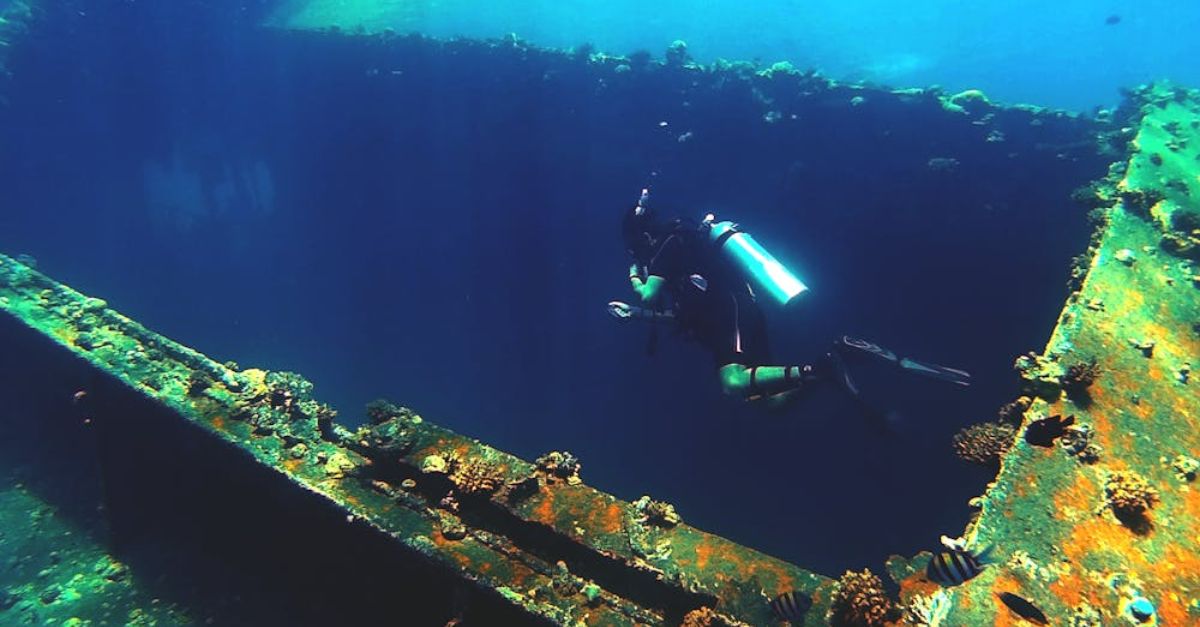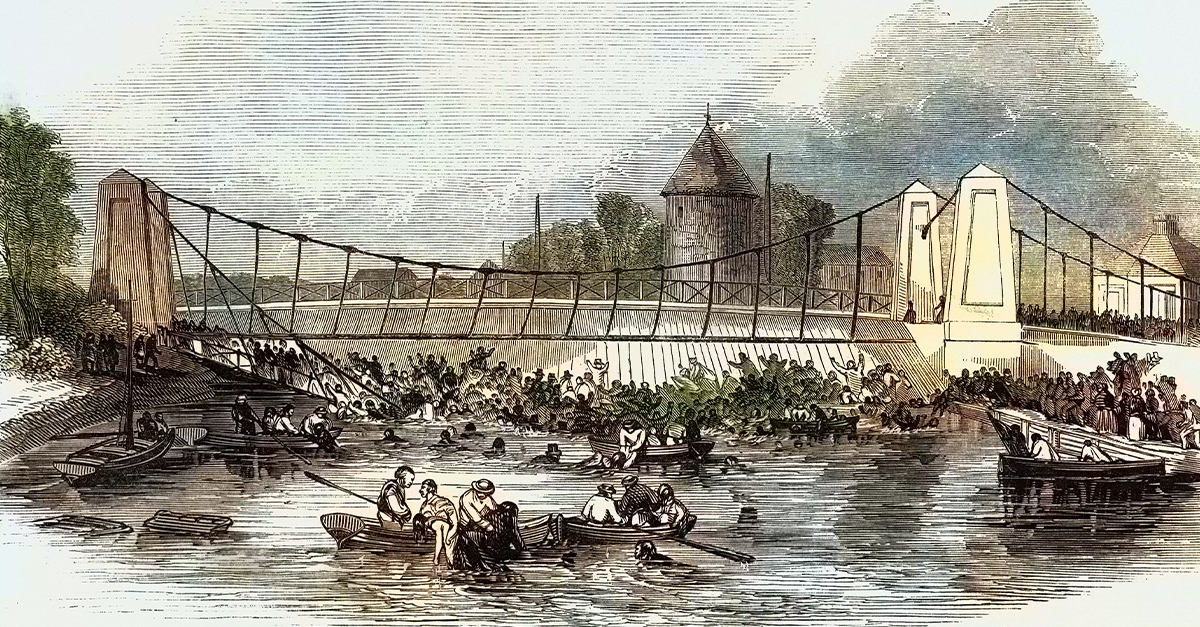An Untold Story Of Spain's Legendary Shipwreck
For centuries, the Atlantic waters were homes to fleets lost to storms and battles. Among them lies the Nossa Senhora do Rosario and the race to protect it has never been more urgent.

Discovery Of A Sunken Ship
The waters off the coast of Portugal have long been known as a graveyard for historic vessels, but a recent discovery has reignited global interest in maritime archaeology. Underwater researcher Alexandre Monteiro has pinpointed the location of a sunken treasure ship that carried an immense fortune in gold and silver.
 Alexandre Monteiro - The challenges we face in regards to the protection of sites by UNESCO
Alexandre Monteiro - The challenges we face in regards to the protection of sites by UNESCO
Part Of A Spanish Treasure
Lost centuries ago, the vessel is believed to have been part of Spain's vast colonial trade network, which transported riches from the Americas back to Europe. Monteiro's findings suggest that dozens of similar ships laden with treasure still lie undisturbed beneath Portuguese and Spanish waters.
 World_Topography.jpg: NASA/JPL/NIMAderivative work: Uxbona, Wikimedia Commons
World_Topography.jpg: NASA/JPL/NIMAderivative work: Uxbona, Wikimedia Commons
A Graveyard Of Shipwrecks
Portugal's coastline has earned a reputation as one of the world's most significant maritime graveyards, with about 250 shipwrecks resting beneath its territorial waters. Many of these vessels date back to the Age of Exploration, a period when Portugal and Spain dominated global trade and exploration.
 Portuguese archaeologists find centuries-old shipwreck by Global News
Portuguese archaeologists find centuries-old shipwreck by Global News
Holding Unbelievable Wealth
According to Euronews, maritime historians believe that these shipwrecks hold a vast wealth of historical and financial significance. While some have been explored, many remain untouched and fuel speculation about the fortunes still waiting to be uncovered.
 Portuguese archaeologists find centuries-old shipwreck by Global News
Portuguese archaeologists find centuries-old shipwreck by Global News
An Extensive Shipwreck Catalog
Alexandre Monteiro has dedicated years to building an extensive catalog of shipwrecks scattered along Portugal's seabed, identifying hundreds of potentially treasure-laden vessels. His research, compiled from historical documents and modern sonar scans, is one of the most comprehensive studies of its kind.
With Amazing Discoveries
Among the most intriguing discoveries is a list of tens of ships believed to have sunk in the Azores alone, many of which carried fortunes in precious metals and valuable cargo. Monteiro's work serves as a call to action for Portuguese authorities to protect these underwater heritage sites.
 Diving a shipwreck in the Azores archipelago by Traveller24
Diving a shipwreck in the Azores archipelago by Traveller24
The Ship Carrying 22 Tons Of Treasure
One of Monteiro's most remarkable discoveries is the Nossa Senhora do Rosario, a Spanish vessel that sank off the Portuguese coast while carrying an astonishing 22 tons of gold and silver. This 17th-century ship was part of Spain's trade network, which transported wealth extracted from the Americas to European markets.
But Remained Untouched
Despite its immense cargo, the Nossa Senhora do Rosario has remained untouched for centuries, hidden beneath layers of sediment and ocean currents. Monteiro's research, as reported by The Jerusalem Post, suggests that the ship's precise location has now been identified.
 Dr. Michael Pidwirny, Wikimedia Commons
Dr. Michael Pidwirny, Wikimedia Commons
The Mystery Of Untouched Gold And Silver
Although centuries have passed since their sinking, many of the treasure-laden ships resting off Portugal's coastline remain untouched. Also, almost none of the ships discovered has been officially recovered. According to Portugal Resident, the remoteness of these shipwrecks and their extreme depths have deterred traditional treasure hunters.
 400-year-old shipwreck discovered off Portugal coast by ETvB English
400-year-old shipwreck discovered off Portugal coast by ETvB English
That Remained Ignored For Centuries
Legal and bureaucratic hurdles have prevented large-scale salvage operations. Monteiro argues that the lack of accessibility has inadvertently protected these historic sites from looters and preserved their immense cultural value. However, with modern advancements, the untouched fortunes of the Atlantic may soon be within reach.
Monteiro's Journey
Monteiro's quest to catalog Spain's lost maritime treasures began as a historian's fascination and evolved into a groundbreaking archaeological mission. Over decades, he meticulously pieced together fragmented naval records and ship logs to build one of the most detailed databases of shipwrecks.
The Process Of Documenting
Documenting and cataloging shipwrecks is a meticulous process that ensures historical accuracy and conservation. Before any artifacts are removed, archaeologists conduct detailed site surveys using sonar scans and 3D mapping. These initial assessments help researchers understand the wreck's layout and possible cargo.
 Commander US 7th Fleet US Naval Forces Central Command, CC BY-SA 2.0, Wikimedia Commons
Commander US 7th Fleet US Naval Forces Central Command, CC BY-SA 2.0, Wikimedia Commons
To Unique Finds
As mentioned in the Novidades Newsletter, Monteiro's research has led him to identify over 8,000 shipwrecks, each with a unique history and potential treasure. By making his findings public and advocating for stronger preservation laws, he hopes to ensure these sites are protected from modern exploitation.
The 1615 Ship That Sparked Monteiro's Passion
His lifelong pursuit of shipwrecks can be traced back to a single mention of a 1615 vessel in a historical footnote. While researching Portuguese and Spanish maritime history, he stumbled upon a brief reference to the Nossa Senhora da Luz, a ship that had reportedly sunk in the Azores.
And Led To Groundbreaking Discoveries
Determined to uncover its fate, Monteiro spent four years combing through historical archives and consulting with naval experts. The Jerusalem Post reports that his dedication finally paid off when he identified the ship's probable location. On his first dive, he discovered compelling evidence of the wreck.
 The National Archives (United Kingdom), CC BY 3.0, Wikimedia Commons
The National Archives (United Kingdom), CC BY 3.0, Wikimedia Commons
Historical Context
The Nossa Senhora do Rosario was a 16th-century Spanish treasure ship that met its fate while traveling the treacherous waters of the Atlantic. This vessel was part of the Spanish treasure fleet, which was responsible for transporting vast amounts of gold and silver.
 Royal Museums Greenwich, Wikimedia Commons
Royal Museums Greenwich, Wikimedia Commons
And Failure To Locate
After the ship sank, several expeditions sought to locate and recover its riches. However, much of the wreck remains unexplored. The Nossa Senhora do Rosario serves as a powerful reminder of the high-risk, high-reward nature of maritime trade in the Age of Exploration.
 Abraham Ortelius, Wikimedia Commons
Abraham Ortelius, Wikimedia Commons
But It's Not The Only One
Other shipwrecks, like the Titanic, are well-documented, while others have been largely forgotten despite their profound impact on history. One such example is the SS Central America, which sank in 1857 carrying gold that contributed to the financial panic of that year.
 Frank Leslie's Illustrated Newspaper, Wikimedia Commons
Frank Leslie's Illustrated Newspaper, Wikimedia Commons
So, Why Were The Azores So Important?
The Azores archipelago, a remote group of volcanic islands in the Atlantic, has always attracted treasure hunters and maritime historians. Due to its strategic position along historic trade routes, it became a frequent stopover for Spanish and Portuguese fleets carrying vast amounts of wealth from the New World.
 Jeff Schmaltz, MODIS Rapid Response Team, NASA/GSFC, Wikimedia Commons
Jeff Schmaltz, MODIS Rapid Response Team, NASA/GSFC, Wikimedia Commons
Fighting Forces Of Nature
Many of these ships met their demise due to unpredictable storms and pirate attacks. According to Novidades Newsletter, the sheer number of wrecks in the region—estimated at over 1,000—has made it a prime target for academic researchers and private treasure hunters.
 Unknown Author, Wikimedia Commons
Unknown Author, Wikimedia Commons
Rising Interest In Treasure Hunting
Although some expeditions have yielded artifacts, most of the submerged fortunes remain undiscovered. Nevertheless, in recent years, technological advancements have sparked a renewed surge of interest. With sonar mapping and improved diving equipment, treasure hunting is more sophisticated and accessible than ever before.
Leading To A Growing Business
Apart from its cultural importance, Monteiro's research has drawn the attention of numerous private exploration companies eager to locate and recover sunken fortunes. However, this rising interest presents ethical challenges, as historians and treasure hunters often clash over who has the rightful claim to these artifacts.
With Too Many Conflicts
While some argue that these treasures belong to humanity and should be preserved in museums, others see them as valuable commodities that should be retrieved and sold. The debate over Portugal's sunken wealth is far from settled, and as more discoveries are made, the discussion is only set to intensify.
And Exceptional Opportunities
Treasure hunting is a multi-billion-dollar industry that attracts investors who want to profit from shipwreck recoveries. While the discovery of gold and silver cargo can generate immense wealth, the cost of searching for and salvaging these treasures is extraordinarily high.
With The Help Of Science
Advanced equipment, research permits, and fees often make treasure-hunting expeditions risky financial ventures. Several companies have spent millions in search of shipwreck treasures, with varying degrees of success. Additionally, recovered artifacts often become the subject of disputes between governments and salvagers.
How 3D Mapping Is Revolutionizing Shipwreck Exploration
3D mapping has become a game-changer in shipwreck exploration. It allows archaeologists to create high-resolution digital models of wrecks without disturbing them. This technique uses sonar scans and laser imaging to generate accurate reconstructions of shipwreck sites. Organizations like the NOAA use 3D photogrammetry to digitally reconstruct historical wrecks.
 Famartin, CC BY-SA 4.0, Wikimedia Commons
Famartin, CC BY-SA 4.0, Wikimedia Commons
Potential Future Discoveries
Hundreds of worthy shipwrecks are still waiting to be explored, and the potential for future discoveries off Portugal's coast remains immense. Monteiro believes that sooner or later, construction projects or natural changes in ocean conditions will expose some of these lost riches.
 erikccooper, CC BY 2.0, Wikimedia Commons
erikccooper, CC BY 2.0, Wikimedia Commons
And A Lingering Question
However, the question remains: will these treasures be responsibly preserved, or will they fall into the hands of private collectors? Monteiro has urged the Portuguese and Spanish governments to take proactive measures in safeguarding these wrecks, as many remain unprotected and vulnerable to unauthorized salvaging.
The Need For Preservation
As interest in sunken treasures grows, experts warn that these historical sites face increasing threats from looters and environmental changes. According to The Jerusalem Post, archaeologists, including Alexandre Monteiro, stress the importance of treating shipwrecks not just as potential treasure troves but as vital pieces of maritime history.
To Protect History
Many of these vessels contain artifacts that provide invaluable insights into centuries-old trade routes and naval warfare. Without proper protection, these sites risk being stripped of their historical value before researchers can fully document them. However, this requires cooperation between governments, academic institutions, and international maritime authorities.
By Involving The Portuguese Government
Determined to safeguard Europe’s underwater heritage, Alexandre Monteiro has urged lawmakers to enact stricter regulations against unauthorized salvage operations. He also suggests that governments should implement official research projects that document these sites before they are disturbed.
 Andrés Monroy-Hernández, CC BY-SA 2.0, Wikimedia Commons
Andrés Monroy-Hernández, CC BY-SA 2.0, Wikimedia Commons
Despite The Challenges
Monteiro has proposed the establishment of a maritime museum that could house recovered artifacts to allow the public to appreciate the Iberian rich naval history. Despite his efforts, he has faced significant bureaucratic challenges and slow-moving political action.
 Robert Wilkinson, Wikimedia Commons
Robert Wilkinson, Wikimedia Commons
Lack Of Government Action
Unfortunately, the government has been slow to take meaningful action to protect these sites. While other countries have implemented strict maritime preservation laws, some lag behind in enforcing regulations against looting and unauthorized salvage. Monteiro and other experts have criticized the lack of designated protected areas for historic wrecks.
And Limited Funds
Another obstacle is the limited funding for underwater archaeological research, which makes it difficult for historians and scientists to study these wrecks properly before they are disturbed. Without immediate intervention, experts fear that Portugal and Spain’s rich maritime history could be lost to private collectors and treasure hunters.
 James E. Buttersworth, Wikimedia Commons
James E. Buttersworth, Wikimedia Commons
The Economic Significance Of These Discoveries
Shipwreck discoveries can improve tourism. They tell stories of the Iberian golden age of exploration, a period that shaped the region's global influence. Preserving and showcasing these treasures could attract history enthusiasts and scholars from around the world and boost local economies.
An Increased Cultural Engagement
Moreover, recovered artifacts could be displayed in museums to provide educational opportunities and enrich national pride in the maritime past. If properly managed, these shipwrecks could become as valuable in cultural capital as they are in monetary worth, which reinforces the need for immediate government action to protect them.
 Kshitika, CC BY-SA 4.0, Wikimedia Commons
Kshitika, CC BY-SA 4.0, Wikimedia Commons
How Unlawful Treasure Hunters Impact These Riches
The greatest threats to these treasures come from deliberate human interference and unintended destruction. Some treasure hunters remove valuable artifacts and disrupt historically significant sites. Many of these looters operate in secrecy and sell recovered items on the black market before they're studied.
And The Effect Of Coastal Development Projects
Beyond looting, large-scale coastal development projects pose an additional risk. Underwater construction and seabed dredging can disturb or even destroy fragile shipwrecks and erase centuries of history in the process. Monteiro has been vocal about the need for environmental impact studies before such projects proceed.
International Laws Should Be Implemented
The protection of shipwrecks is a complex issue governed by international maritime laws. The 2001 UNESCO's Underwater Cultural Heritage Convention is the primary legal framework designed to prevent looting and unregulated commercial salvage of historic wrecks.
 Thomon, CC BY-SA 4.0, Wikimedia Commons
Thomon, CC BY-SA 4.0, Wikimedia Commons
With A Treaty Put Into Action
This treaty establishes guidelines for the ethical excavation and management of underwater sites to ensure that cultural heritage remains intact. However, not all countries have ratified the convention, which leaves many historic shipwrecks vulnerable to exploitation. Additionally, disputes over territorial waters often complicate the law's enforcement.
The Ethics Of Commercial Salvage Operations
While some argue that commercial salvaging brings valuable artifacts to the surface, critics warn that profit-driven operations often prioritize financial gain over historical integrity. Some companies have sparked controversy by extracting gold and silver from shipwrecks without prioritizing archaeological study.
And Conflict With Scholars
Many archaeologists believe that shipwrecks should be studied in their original underwater settings before any recovery takes place, as this guarantees that historical narratives remain intact. Striking a balance between responsible excavation and financial interests remains a major challenge in maritime archaeology.
Public Engagement Should Also Be A Priority
Public awareness campaigns and museum exhibitions help people understand the cultural significance of shipwrecks beyond their monetary value. Many maritime museums and institutions host virtual tours for people to explore shipwreck sites through 3D reconstructions and augmented reality.
 Coredesat, CC BY 3.0, Wikimedia Commons
Coredesat, CC BY 3.0, Wikimedia Commons
What The Future Holds
The future of underwater archaeology is changing thanks to artificial intelligence and growing international collaboration. Robots and AI-driven sonar mapping are reducing the costs and risks of deep-sea exploration. Meanwhile, UNESCO is advocating for stricter enforcement against illegal salvaging.





























